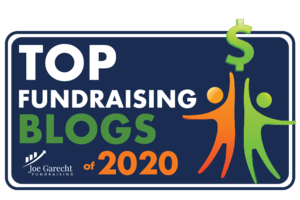This year has been one of great uncertainty and change for everyone, including those of us in the nonprofit sector. As 2020 comes to a close, and we’re poised to begin a new year, I had the opportunity to answer a number of questions from Mary Jane Bobyock, CFA, Managing Director of the Nonprofit Advisory Team, Institutional Group at SEI Institutions. Bobyock says:
One particular area that’s been different in 2020 is how nonprofits raise money. … Michael Rosen graciously answers my questions about the future of fundraising, the latest trends and considerations for fundraising post COVID-19 for 2020 and beyond.”
One of Babyock’s questions concerned Donor Advised Funds:
Donor Advised Funds (DAFs) have been steadily increasing as an effective fundraising vehicle but what are your thoughts about ways DAFs could change?”
My response is that DAFs will continue to play a growing role in the nonprofit world.
We will continue to see record in-flows and out-flows involving DAFs. While traditional DAFs have required the contribution of thousands of dollars to create an account, we are now seeing the rising popularity of micro-DAFs that allow even small donors to establish giving accounts with no minimum contribution required for creation. This means, in addition to the increase in money flowing through DAFs, we are seeing an increase in the number of individuals who have created a DAF account.
 The CARES Act, adopted by the federal government this year in response to the coronavirus pandemic, provides a number of tax incentives for charitable giving that will expire at the end of 2020. Not only will this encourage more donations directly to charitable organizations, it will likely encourage greater in-flows into DAF accounts.
The CARES Act, adopted by the federal government this year in response to the coronavirus pandemic, provides a number of tax incentives for charitable giving that will expire at the end of 2020. Not only will this encourage more donations directly to charitable organizations, it will likely encourage greater in-flows into DAF accounts.
Given the DAF trends, charities should let donors know they accept DAF gifts. For example, an organization might highlight a DAF supporter in a newsletter. Also, the organization’s website should remind donors that they can recommend a contribution through their DAF. While charities will provide a hard-credit for gifts to a DAF’s sponsoring organization, a soft-credit should be made to the individual recommending the gift. You should also thank that person. Later, when appealing to that individual, the charity should remind him that he can recommend another DAF gift.
Another way to encourage supporters to recommend a DAF donation to your organization is to include a DAF widget on your website. The free DAFwidget from MarketSmart makes it easy for individuals to support your organization through their DAF. As MarketSmart says:
You already make it easy for supporters to make donations online using their credit cards, so why not do the same for those with donor-advised funds? DAFwidget makes it simple and convenient to find theirs among over 900 funds in our system.”
When you visit the SEI Knowledge Center, you can read the full article containing my answers to the following questions nonprofit leaders are asking:










